The best user-facing technologies are invisible to consumers and end-users. Their widespread adoption depends on this invisibility.
Consider the legacy internet which now has over 5.4 billion users. Let alone digital-native GenZs and Gen Alphas, even Boomers can easily use Web2 products and services. So much so, they comprise 18.3% of U.S. internet users, despite spending most of their lives in the pre-internet era.
That’s the power of abstraction, i.e. the process of hiding technical complexities from the user experience. Users can pay with their banking app even if they don’t understand how VISA or Mastercard enables these payments. Same with AI-powered recommendations on Amazon, Netflix, etc.
But Web3 is lagging on this front. Its UX is highly complicated and fragmented, with different wallets and assets/tokens for different chains with low native interoperability. Devs face similar issues that undercut efficiency and security.
All these are critical factors stopping Web3 from achieving internet-scale adoption. Thus Arcana Network has pioneered a chain abstraction module to fix the problem.
According to Arcana Co-Founder, Mayur Relekar, “Alongside our auth and gas fees abstractions, the latest chain abstraction module enables a fully-interoperable, user-friendly, and capital-efficient user experience, from onboarding to cross-chain transfers and everything in between.”
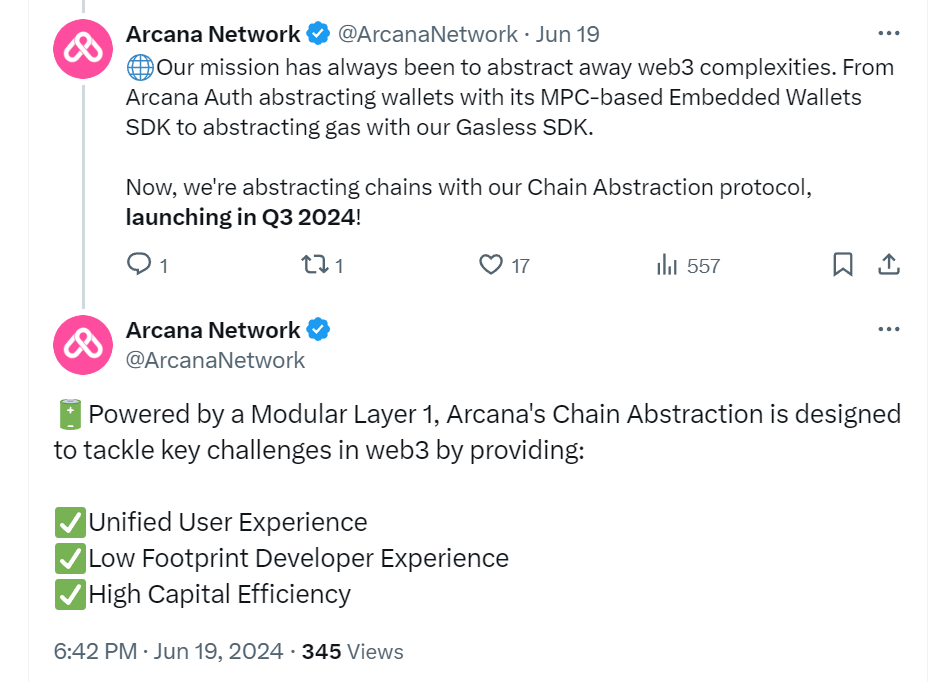
The pain points of fragmentation
Roughly 4.2 million daily Unique Active Wallets (dUAWs) interacted with dApps at the close of 2023. The number stands at 10.4 million in June 2024.
dUAW serves as a working proxy for users, so these figures represent a bullish signal on the surface. But a closer look reveals a fragmented reality.
The 10+ million wallets or users are widely scattered across 150+ blockchains, with greater concentration in the top 10-20 like Ethereum, Solana, Bitcoin, Base, Binance Smart Chain, etc.
Further, the rapid expansion of Layer-2s, Layer-3s, Sidechains, etc., is worsening the situation. There are 58 L2 projects and 17 L3 projects already. At least 53 more in the pipeline.
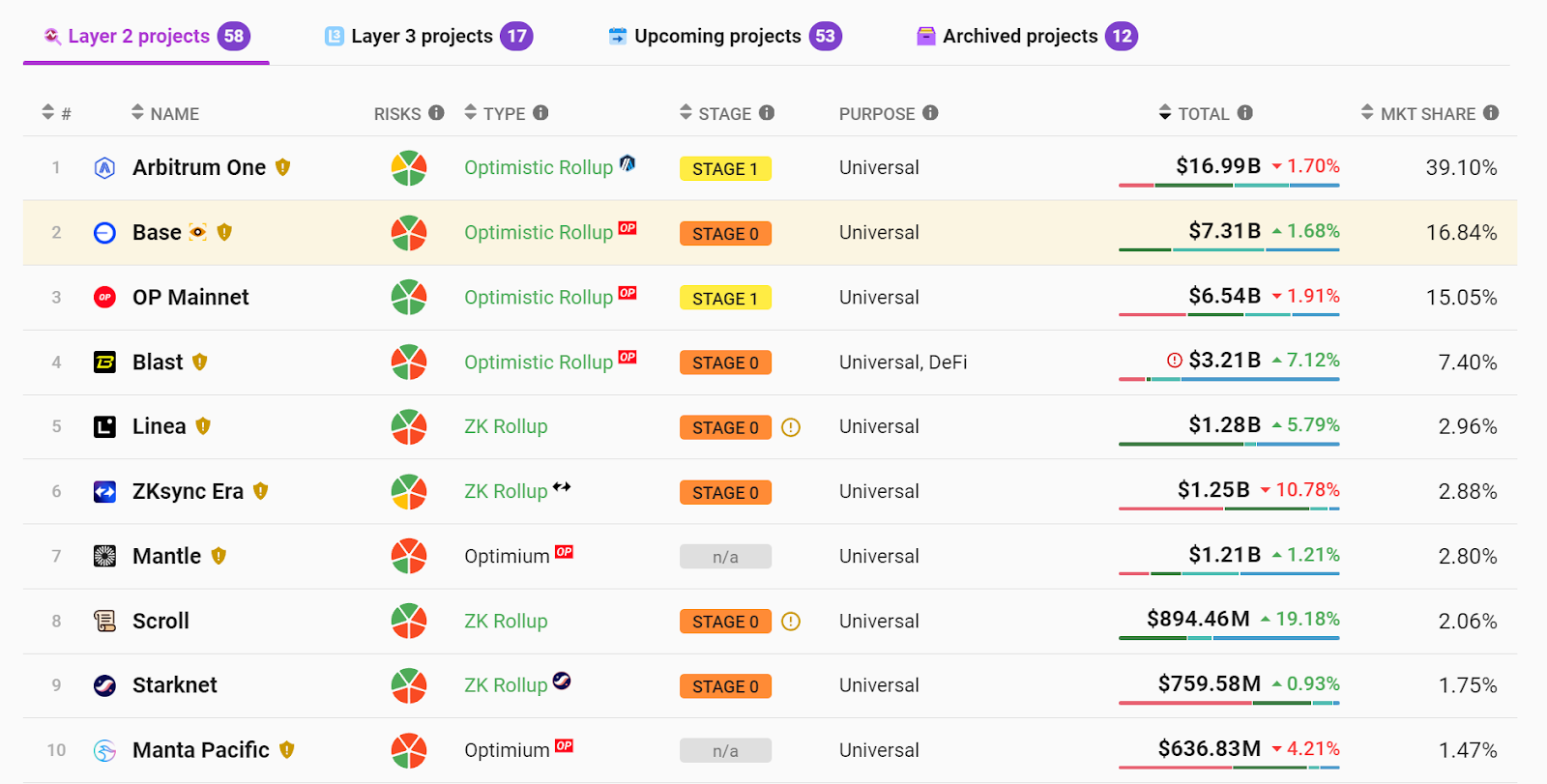
Users need various assets/tokens to interact with various protocols or projects — even when they’re in the same ecosystem. For example, $MATIC — Polygon’s native token — doesn’t work on Ethereum L1, though Polygon is EVM-compatible. Plus, sometimes they have to deposit funds even before trying a dApp, which obviously isn’t welcome.
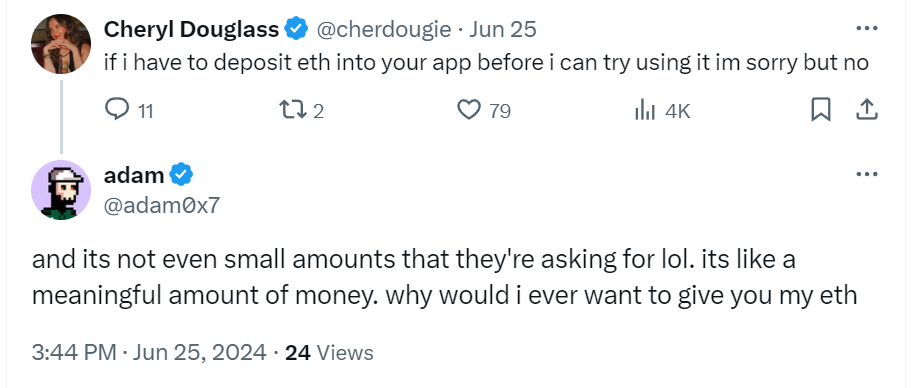
Cross-chain asset transfers are also too much hassle for potential users and a daily pain for power users. Simple actions like sending USDT involve many steps: bridging, swapping, etc. And usually, there’s a fee at each step, no matter how small.

Because users and liquidity are fragmented across chains, devs are compelled to chase them by deploying clones of their apps in various ecosystems. Sadly, that’s the real state (and extent) of cross-chain features currently. It’s an edifice built on ad hoc, inefficient workarounds.
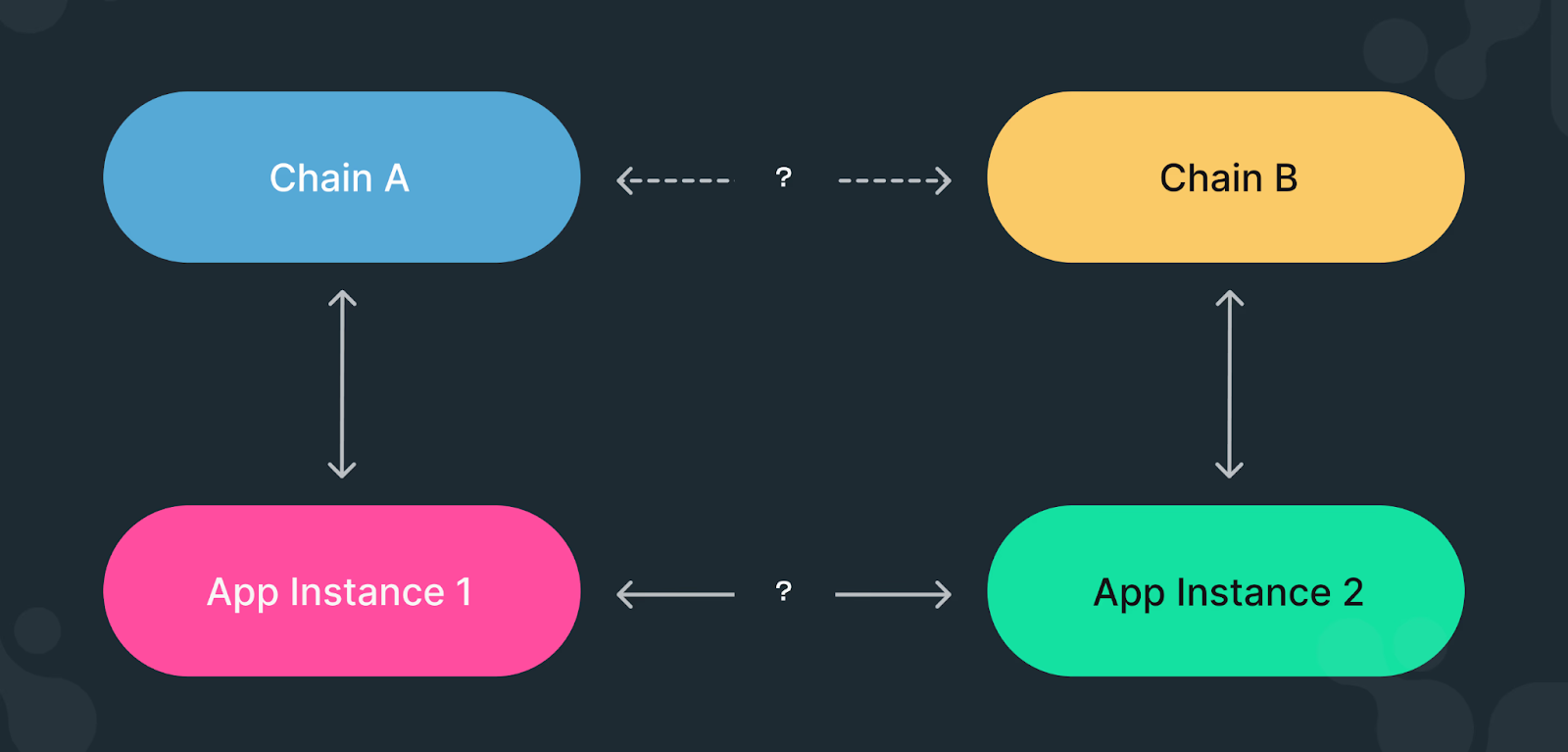
Moreover, the overdependence on bridges results in severe capital inefficiencies. Per data from Everclear (formerly, Connext), roughly 80% of daily volumes for cross-chain DeFi protocols can be netted. It means users are sending 5x more liquidity through bridges than necessary, thereby paying more for gas, etc.
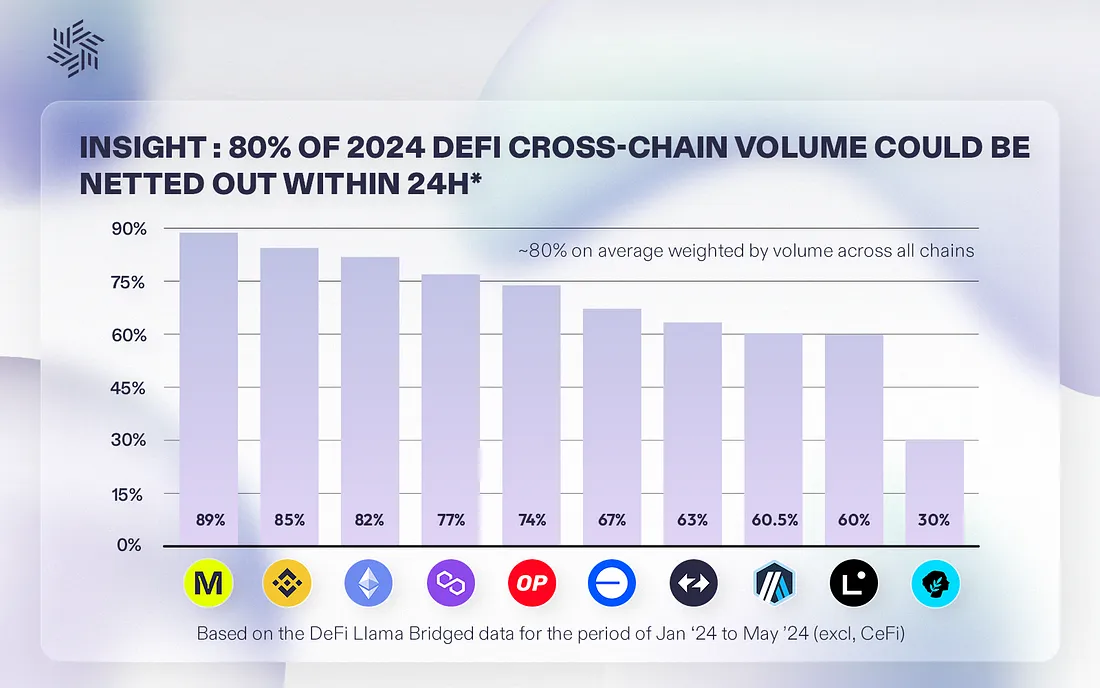
Defragmenting Web3 with chain abstraction
Arcana’s solution will ensure that users can only focus on the dApp they’re using and the outcome they’re seeking. Be it sending crypto or providing liquidity to AMMs. They don’t need to worry about what chain(s) the app is running on or what native token it’s using.
As Mayur says, “Our offering eliminates friction points by allowing users to simply login with their existing Web2 credentials and have all their Web3 assets readily accessible without any chain hassles.”
Practically, this means users can interact with any dApp on any chain without holding any specific asset or token. Someone with ETH in their wallet can use a Solana or BSC-based dApp and so on.
They’ll even see a unified balance for funds held on various chains and can spend it as they choose, where they choose.

Arcana will thus ease the Web3 user’s journey at every level while serving every app, every chain, and every token type.
Its chain abstraction module will disrupt bridges and unlock native interoperability, leading to better capital efficiency. For example, it’ll eliminate unnecessary bridging transactions by optimally using the destination chain’s liquidity.
Besides solving user and liquidity fragmentation — while optimizing capital efficiency — Arcana’s solution reduces friction for developers.
“Developers can build on any chain that best suits their app’s needs and business interests,” says Mayur.
Notably, however, the framework enabling such defragmentation and UX simplification is highly complex and multi-layered. It implements cutting-edge innovations like state machines to maintain user balances, Distributed Key Generation (DKG) for decentralization, and so on.
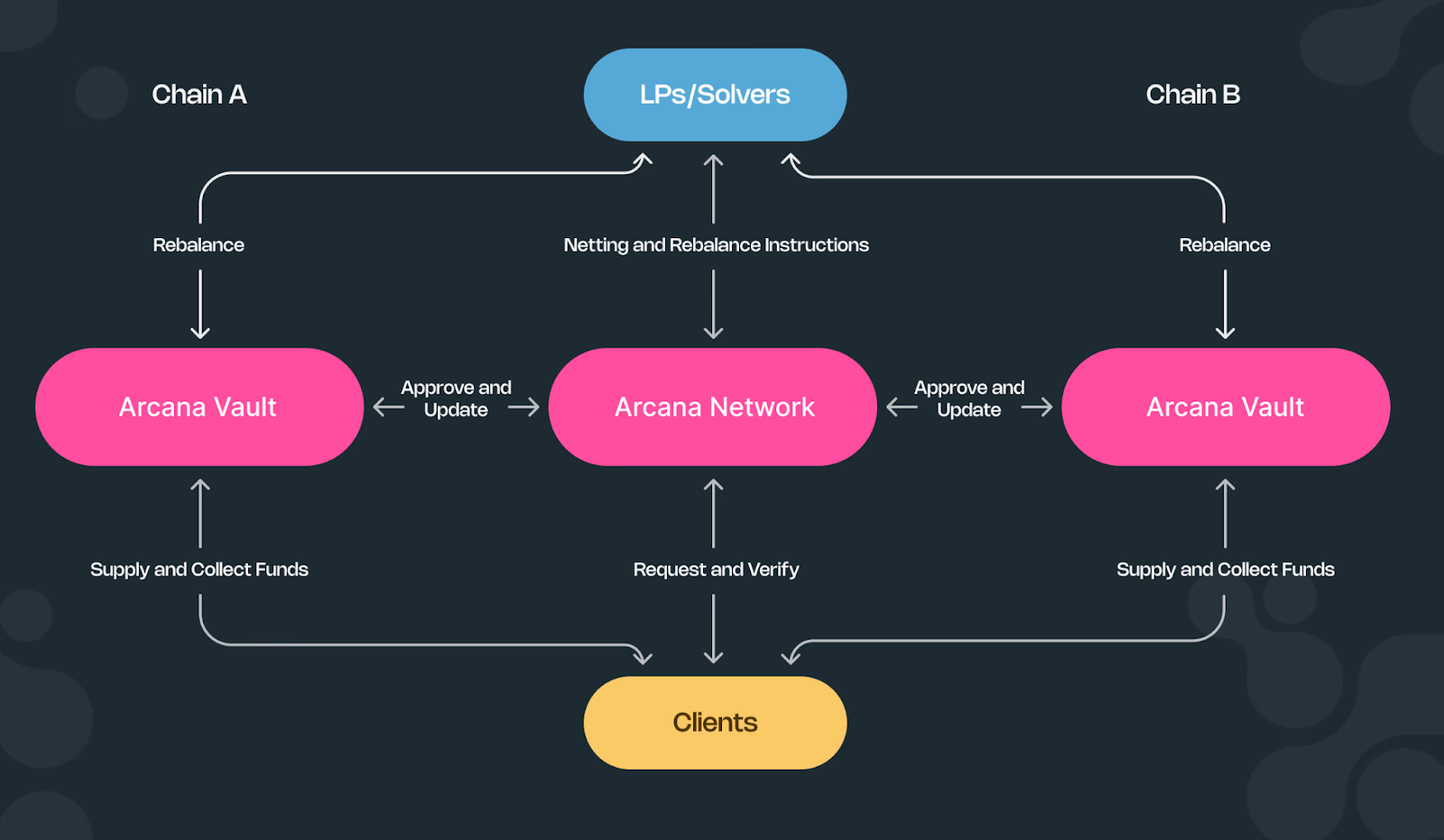
That end-users don’t get the slightest whiff of Arcana’s complex L1 architecture — unless they want to and read the open-source docs — is a proof of success. It’s an example for projects aiming to onboard the next one billion users to Web3.
Empowering users and making life better, easier for them is the endgame. The powerful Web3 stack will truly mature when it functions silently under the hood. Arcana is catalyzing this reality with its progressive tools and systems — a user-friendly and seamless Web3 future is coming soon.
